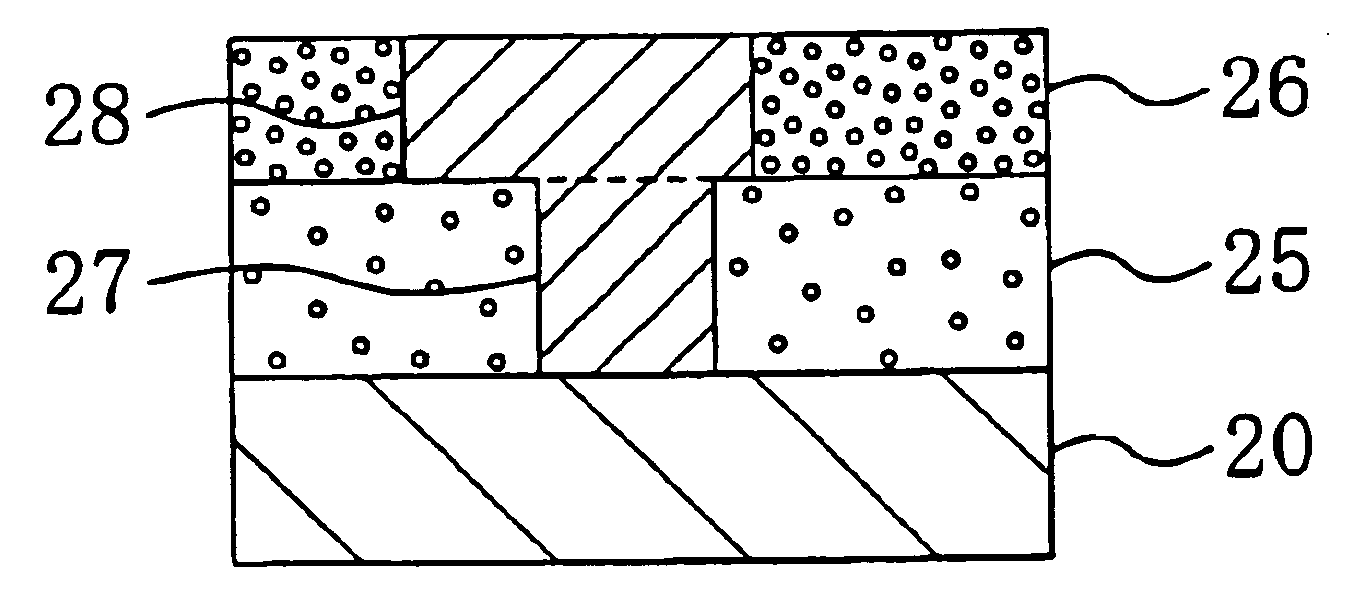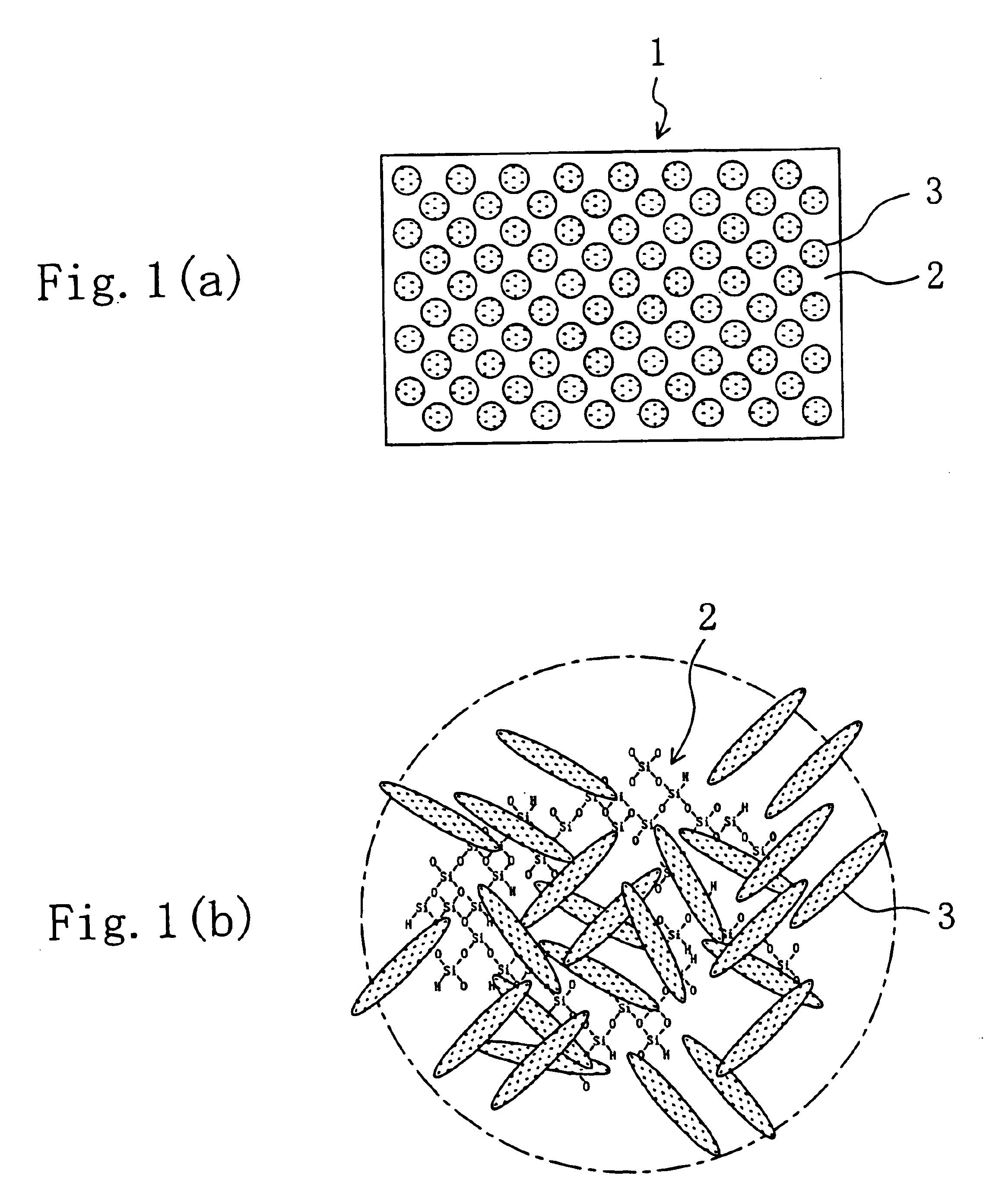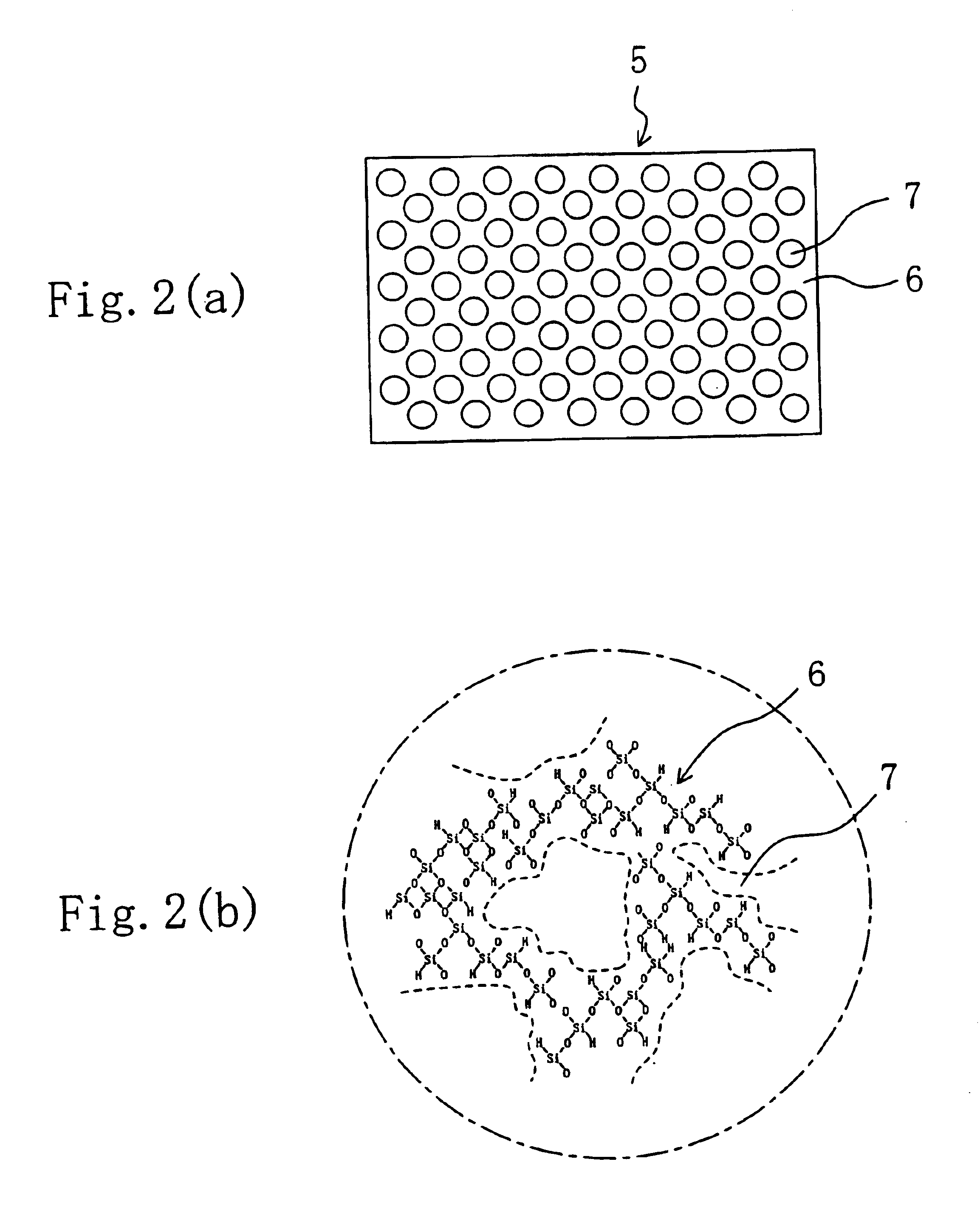Porous, film, wiring structure, and method of forming the same
a technology of porous film and wiring structure, which is applied in the direction of semiconductor devices, electrical equipment, semiconductor/solid-state device details, etc., can solve the problems of first conventional method having the problem of higher cost, delay in wiring time, and inability to implement a semiconductor integrated circuit with higher performance, so as to reduce the dielectric constant of the inter-layer dielectric, maintain sufficient mechanical strength and heat diffusing, and improve the effect of mechanical strength and heat conductivity
- Summary
- Abstract
- Description
- Claims
- Application Information
AI Technical Summary
Benefits of technology
Problems solved by technology
Method used
Image
Examples
embodiment 1
In accordance with a method of forming a porous film according to a first embodiment of the present invention, an organic-inorganic hybrid film is formed by plasma enhanced CVD using, as a reactive gas, a gas mixture of a silicon alkoxide gas and an organic compound gas and then a plasma process is performed with respect to the organic-inorganic hybrid film by using a plasma derived from a gas containing a reducing gas.
First, a gas mixture of a gas obtained by vaporizing vinyltrimethoxysilane (flowrate: 1 ml / min) as the siliconalkoxide and an acetylene gas (flow rate: 100 sccm) as the organic compound gas is introduced under pressure of 1.0 Torr into a vacuum chamber. On the other hand, RF power of 13.56 MHz is applied with electric power of 500 W between counter electrodes to generate a plasma derived from the gas mixture, whereby the organic-inorganic hybrid film having a siloxane skeleton and a thickness of 320 nm is deposited on a substrate. The plasma enhanced CVD process was p...
embodiment 2
In accordance with a method of forming a porous film according to a second embodiment of the present invention, an organic-inorganic hybrid film is formed by plasma enhanced CVD, using, as a reactive gas, a gas mixture of a silicon alkoxide gas and an organic compound gas and then a thermal process is performed with respect to the organic-inorganic hybrid film in an atmosphere containing a reducing gas.
First, the organic-inorganic hybrid film is formed by plasma enhanced CVD using, as the reactive gas, a gas mixture of a gas obtained by vaporizing vinyltrimethoxysilane as the silicon alkoxide and an acetylene gas as the organic compound gas, similarly to the first embodiment.
Next, a thermal process at a temperature of about 400° C. is performed with respect to the organic-inorganic hybrid film by using, e.g., an electric furnace in an atmosphere containing a reducing gas which is composed of a gas mixture of a hydrogen gas, a nitrogen gas, and an oxygen gas.
According to the second e...
embodiment 3
In accordance with a method of forming a porous film according to a third embodiment of the present invention, an organic-inorganic hybrid film is formed by plasma enhanced CVD using, as a reactive gas, a gas mixture of a silicon alkoxide gas and an organic compound gas and then a plasma process is performed with respect to the organic-inorganic hybrid film using a plasma derived from an ammonia gas and an oxygen gas.
First, the organic-inorganic hybrid film is formed by plasma enhanced CVD using, as the reactive gas, a gas mixture of a gas obtained by vaporizing vinyltrimethoxysilane as the silicon alkoxide and an acetylene gas as the organic compound gas, similarly to the first embodiment.
Next, a gas mixture of an ammonia gas (flow rate: 100 sccm), an argon gas (flow rate: 1000 sccm) as a dilute gas, and an oxygen gas (flow rate: 100 sccm) is introduced under pressure of 5 Torr into a vacuum chamber and RF power of 13.56 MHz is applied with electric power of 500 W between counter e...
PUM
 Login to View More
Login to View More Abstract
Description
Claims
Application Information
 Login to View More
Login to View More - R&D
- Intellectual Property
- Life Sciences
- Materials
- Tech Scout
- Unparalleled Data Quality
- Higher Quality Content
- 60% Fewer Hallucinations
Browse by: Latest US Patents, China's latest patents, Technical Efficacy Thesaurus, Application Domain, Technology Topic, Popular Technical Reports.
© 2025 PatSnap. All rights reserved.Legal|Privacy policy|Modern Slavery Act Transparency Statement|Sitemap|About US| Contact US: help@patsnap.com



